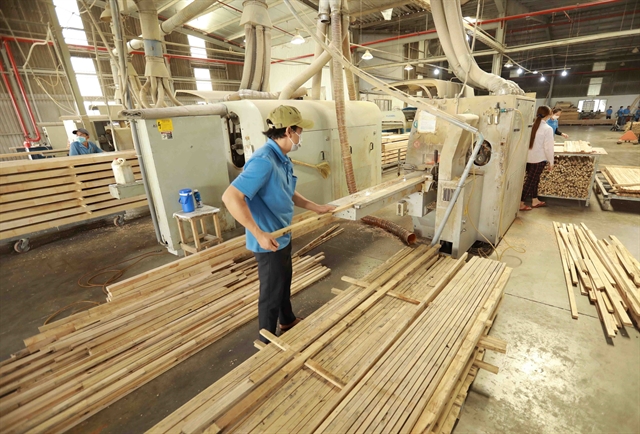 Opinion
Opinion

 |
| Trần Quang Bảo, Director of the Forestry Department under the Ministry of Agriculture and Rural Development. — Photo baochinhphu.vn |
Trần Quang Bảo, Director of the Forestry Department under the Ministry of Agriculture and Rural Development addressed the press regarding future forest management strategies, particularly in light of the recent implementation of the Land Law 2024.
Can you share the remarkable strides made by Việt Nam's forestry sector under the ambitious 2021-2030 Development Strategy, envisioning progress up to 2050?
Over the past three years, the forestry sector has seen remarkable advancements across economic, social and environmental aspects. Economically, there's been a notable shift towards elevating the value-added aspect of forestry production. We've witnessed a steady annual growth of 4.6 per cent in forestry production value, alongside an impressive average export worth of US$15.8 billion in wood and forest products, boasting a healthy trade surplus. Notably, revenue from forest environmental services has soared to an average of VNĐ3.65 trillion annually, with 2023 marking a pinnacle at VNĐ4.13 trillion. This includes a substantial VNĐ997 billion from forest carbon sequestration, alleviating pressure on state budgets, and funding vital forest protection efforts across 7.3 million hectares, cementing a robust and sustainable financial pillar for forestry sector.
On the social front, forestry initiatives have been instrumental in generating employment for approximately five million direct labourers. Support policies for forest protection, coupled with payments to households and communities, have extended over an average of 6.2 million hectares annually. This not only fosters income streams but also enhances livelihoods, contributing significantly to poverty alleviation and fostering new rural development in mountainous regions.
Regarding the environment, the forest coverage rate continues to be maintained at 42.02 per cent. Strict management practices have curtailed primary timber exploitation from natural forests. Forest protection and developmental strides have yielded tangible outcomes, fortifying water and environmental security while aligning with global commitments on climate change mitigation, greenhouse gas reduction, and the pursuit of green, circular economies and other sustainable development goals.
As we gear up for the Land Law 2024, what transformative changes are on the horizon for the forestry sector?
Amid global shifts and the dawn of new market norms aimed at tracing timber origins and tackling climate change head-on, the forestry realm is poised for a metamorphosis. It's time to dismantle barriers hindering forestry production, fortify national security and revise legal frameworks to sync with the Land Law 2024 amendments. A crucial aspect involves devolving authority for altering forest land use to provincial People's Councils.
To ensure robust execution and foster sustainable forest growth, the forestry sector will propose to the Government to issue decrees to enforce this law. Simultaneously, it'll champion policies driving economic uplift for citizens while ensuring ecological forest management through development of eco-tourism and non-timber forest product cultivation beneath the forest canopy.
Currently, there is a disparity in land statistics between the forestry sector and environmental resources. Therefore, we are advising the Government to issue a national forestry plan, clearly defining targets for various types of forests: protective forests, special-use forests, and production forests.
This blueprint will empower localities to audit, survey, and delineate boundaries in sync with land records, thereby fostering stable governance and mobilising resources for forest advancement.
Additionally, the forestry arena is embracing the digital age, building databases to link with a million forest custodians, overseeing each forest parcel, and annually updating forest development trends.
The Land Law 2024 has sparked a significant shift in land and forest use rights. But how does this change impact our strategic plans?
The Forestry Law has been revised to align with the Land Law 2024. The forestry sector is actively urging the Government to refine these regulations through amended decrees, aiming to simplify administrative procedures and empower citizens to utilise their allocated land more effectively.
Looking ahead to 2024, the forestry sector is gearing up for a collaborative effort with various agencies and local authorities to conduct a sweeping forest inventory and audit. This endeavour aims to evaluate forest quality, connect forest parcels with rightful owners, and address boundary disputes for parcels lacking clear ownership, all to facilitate smoother land and forest allocation procedures.
Out of the 14.7 million hectares of forest land and land with forests, approximately 3.3 million hectares lack clear ownership and are currently under temporary management by local People's Committees. With the guidance of the Land Law 2024 and government directives, these areas will undergo continuous review and allocation, prioritising distribution to individuals to bolster livelihoods and foster stability in communities. — VNS




